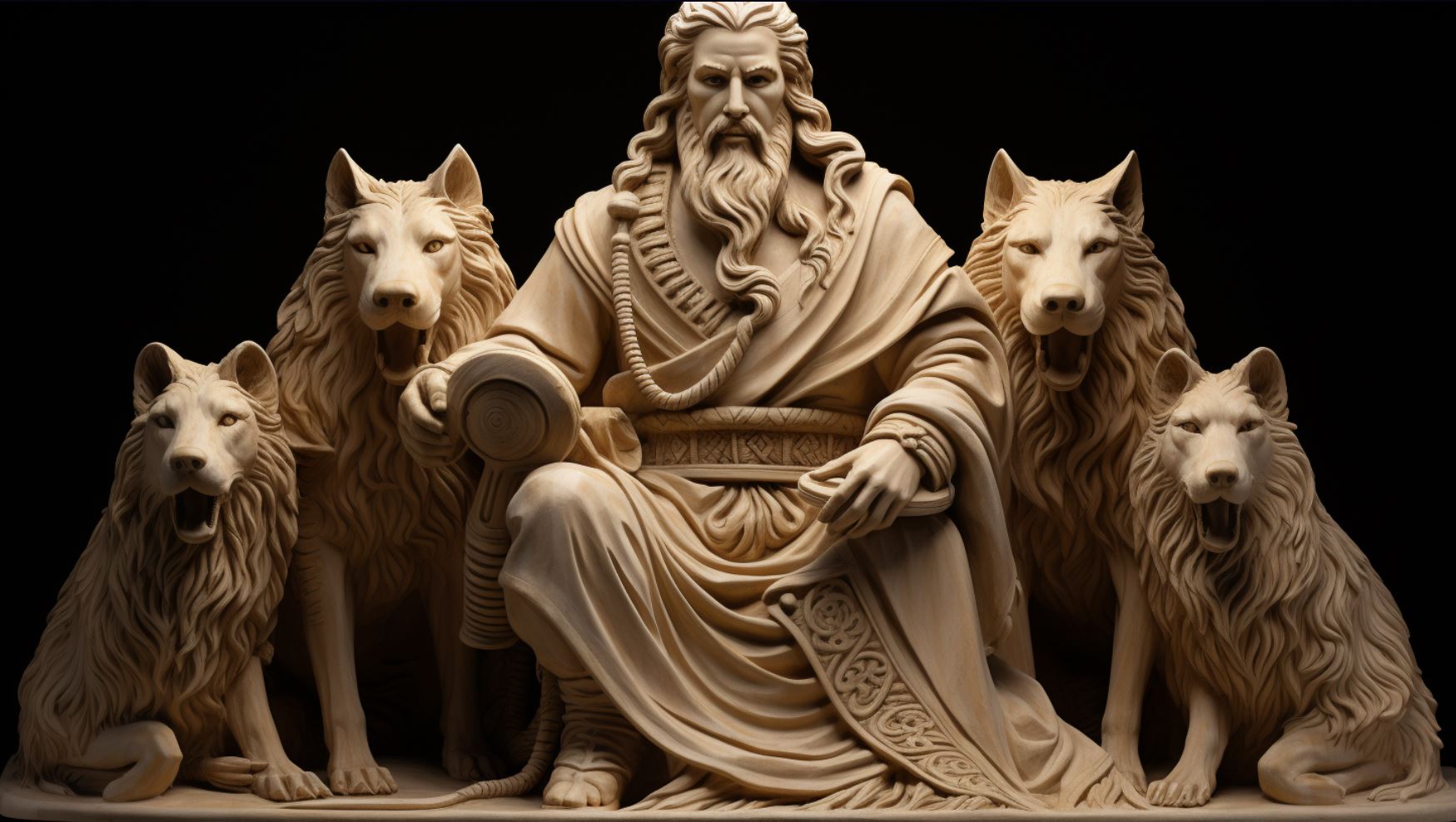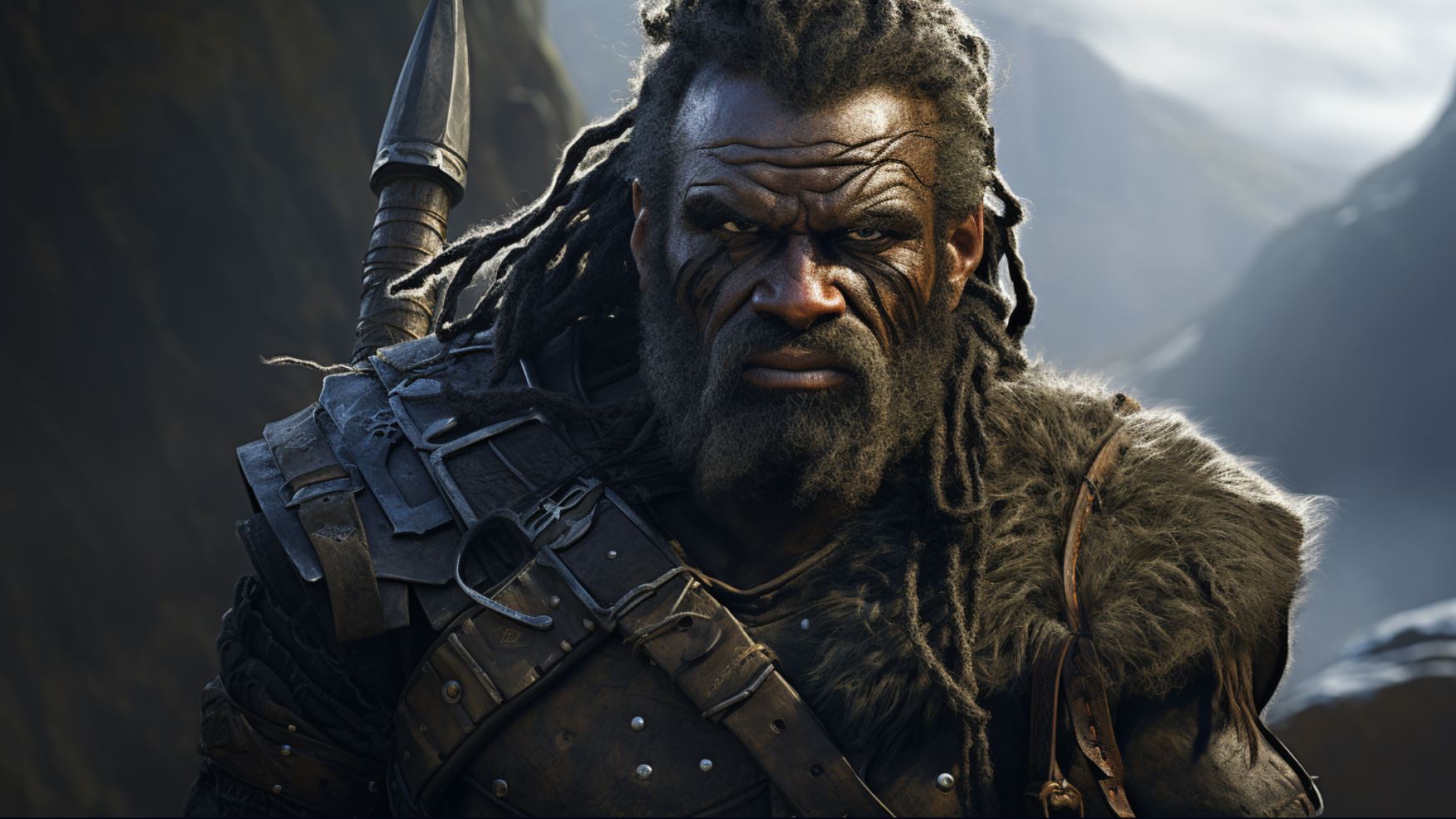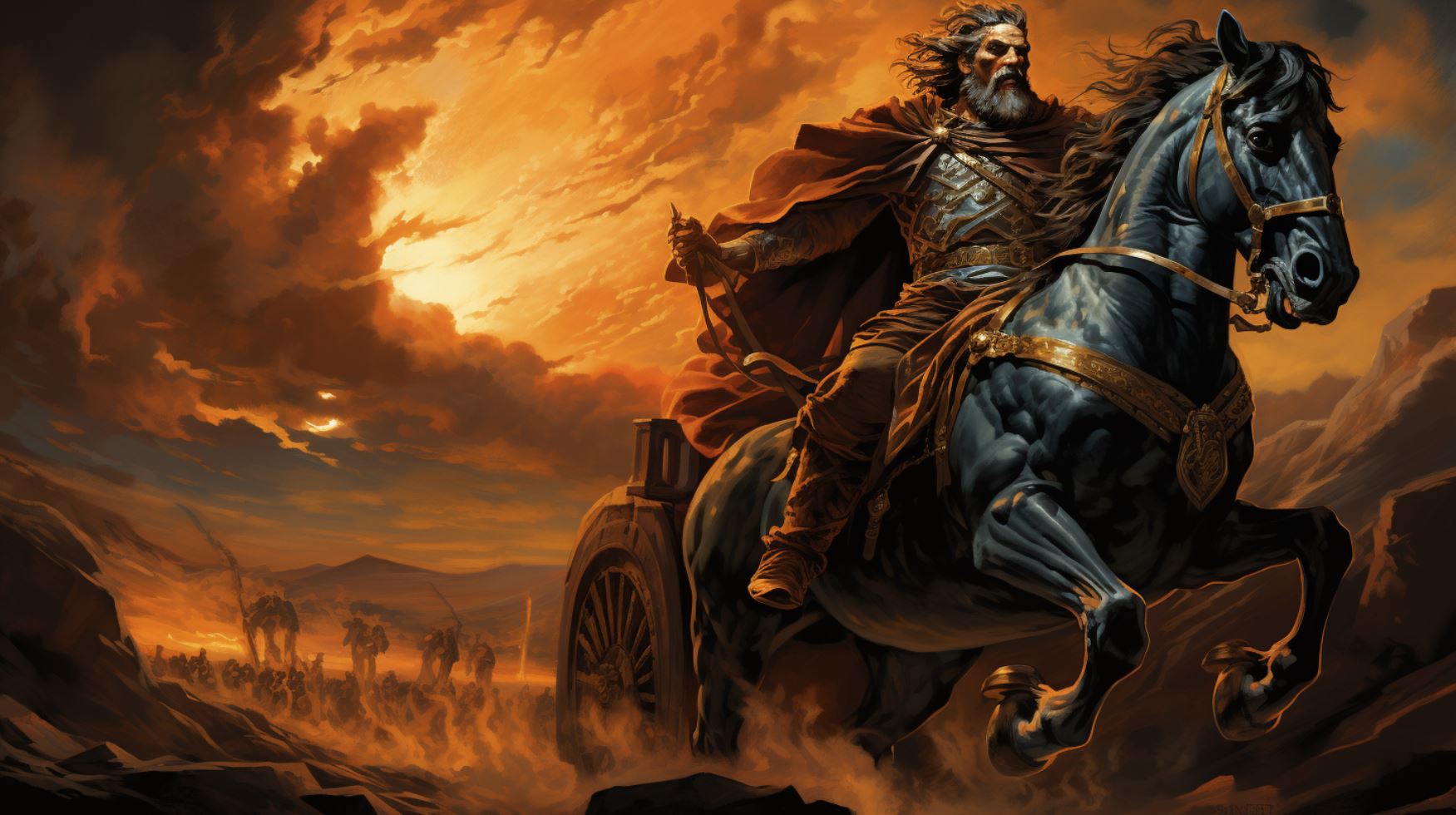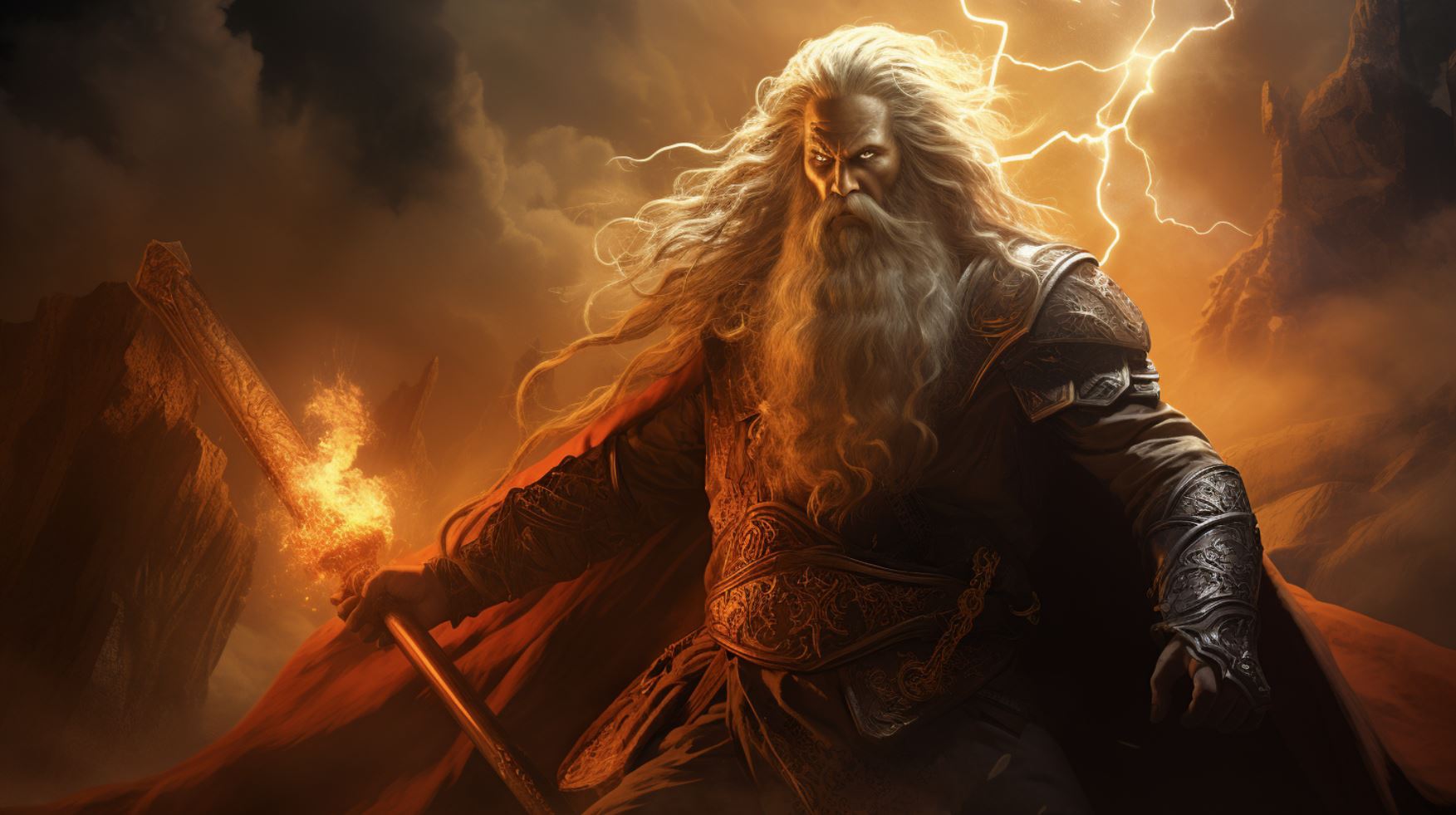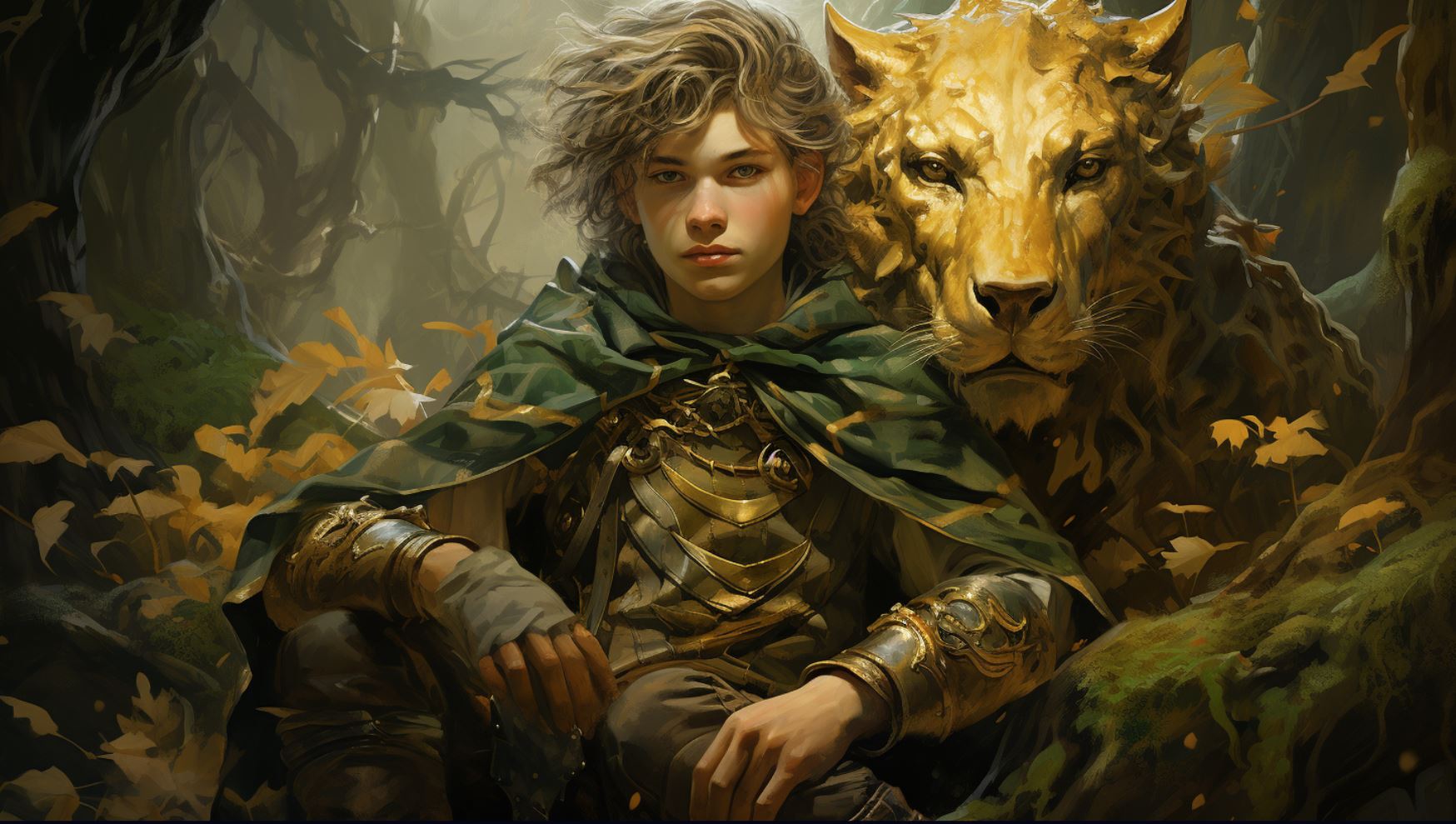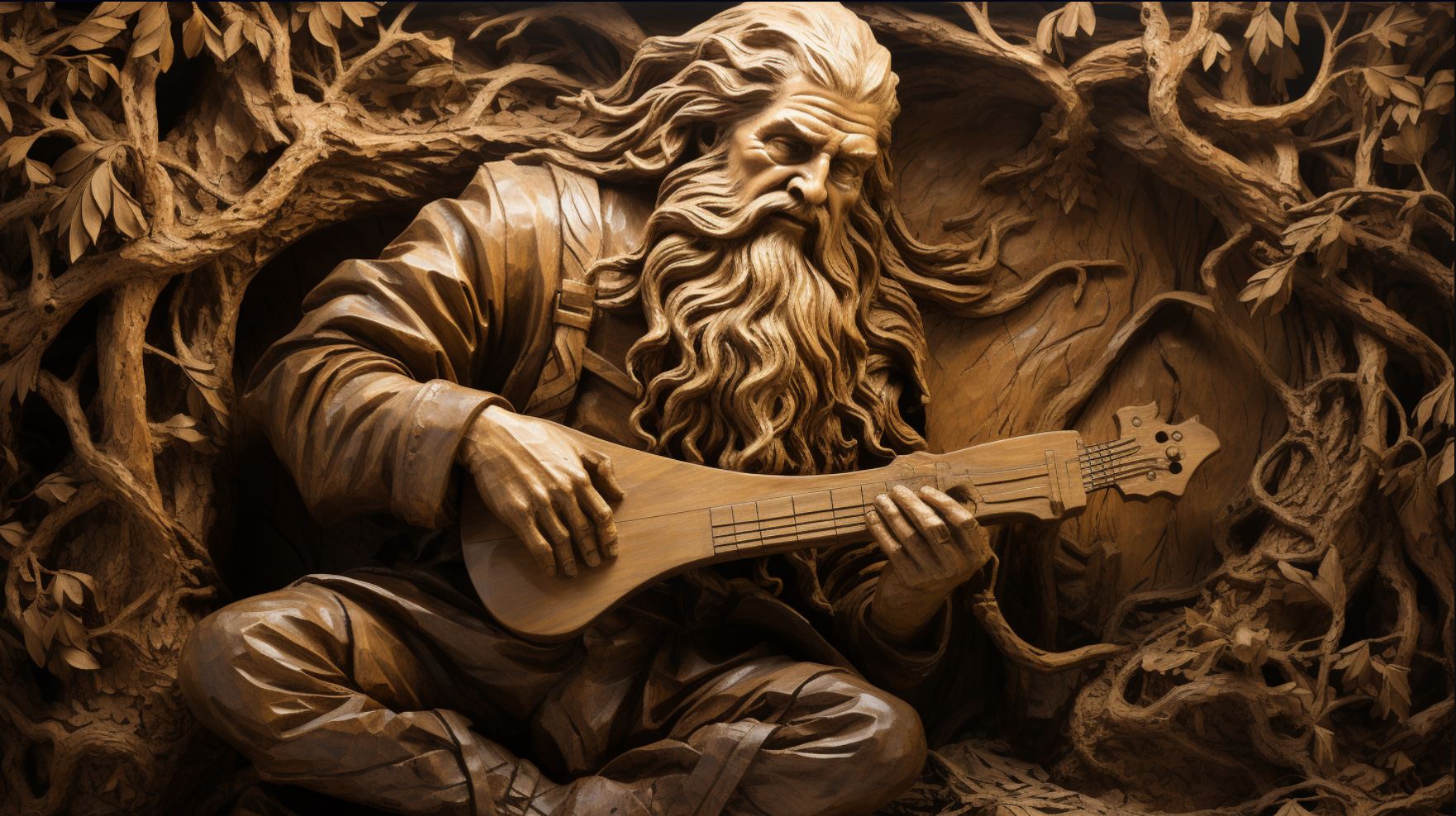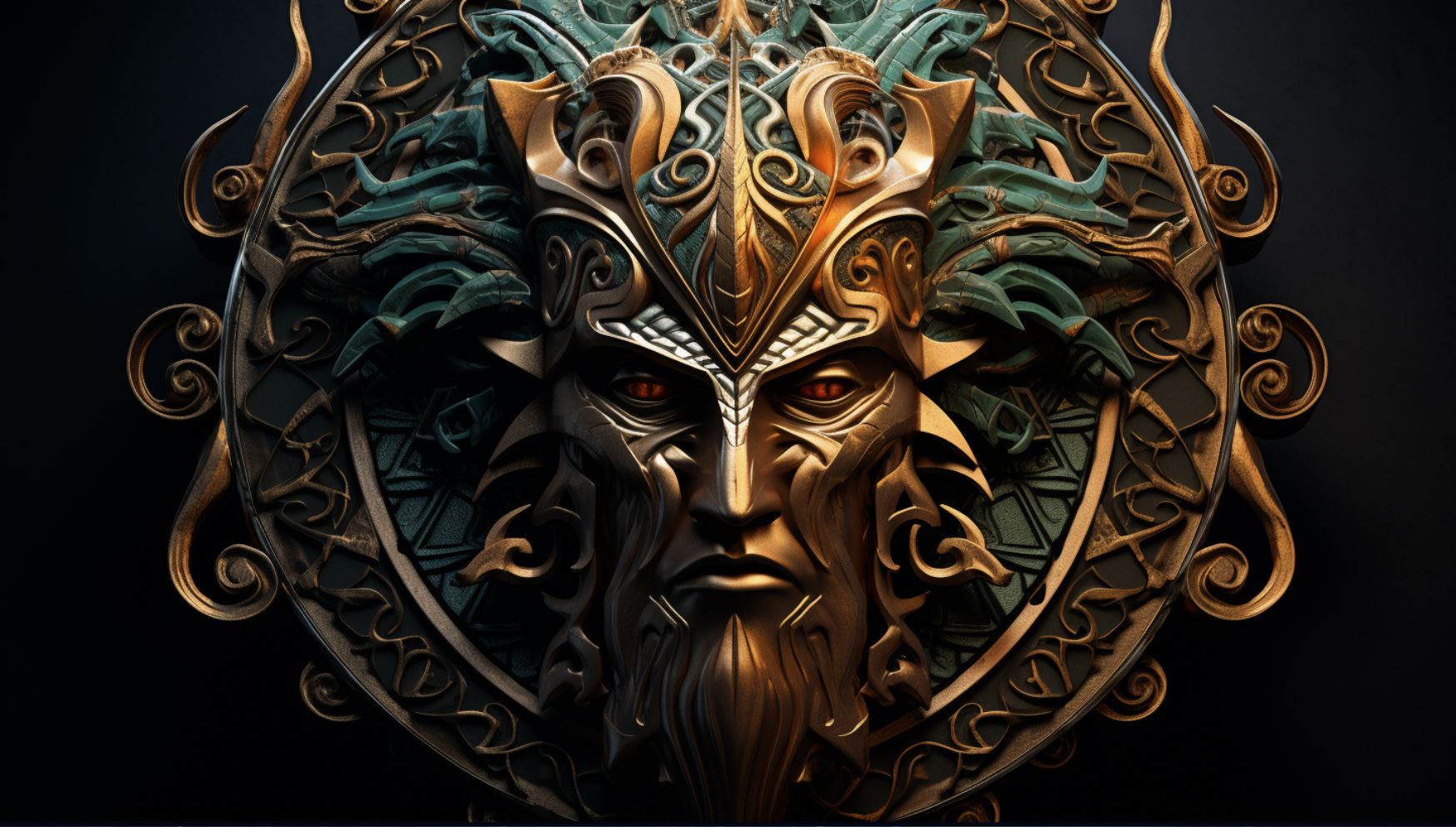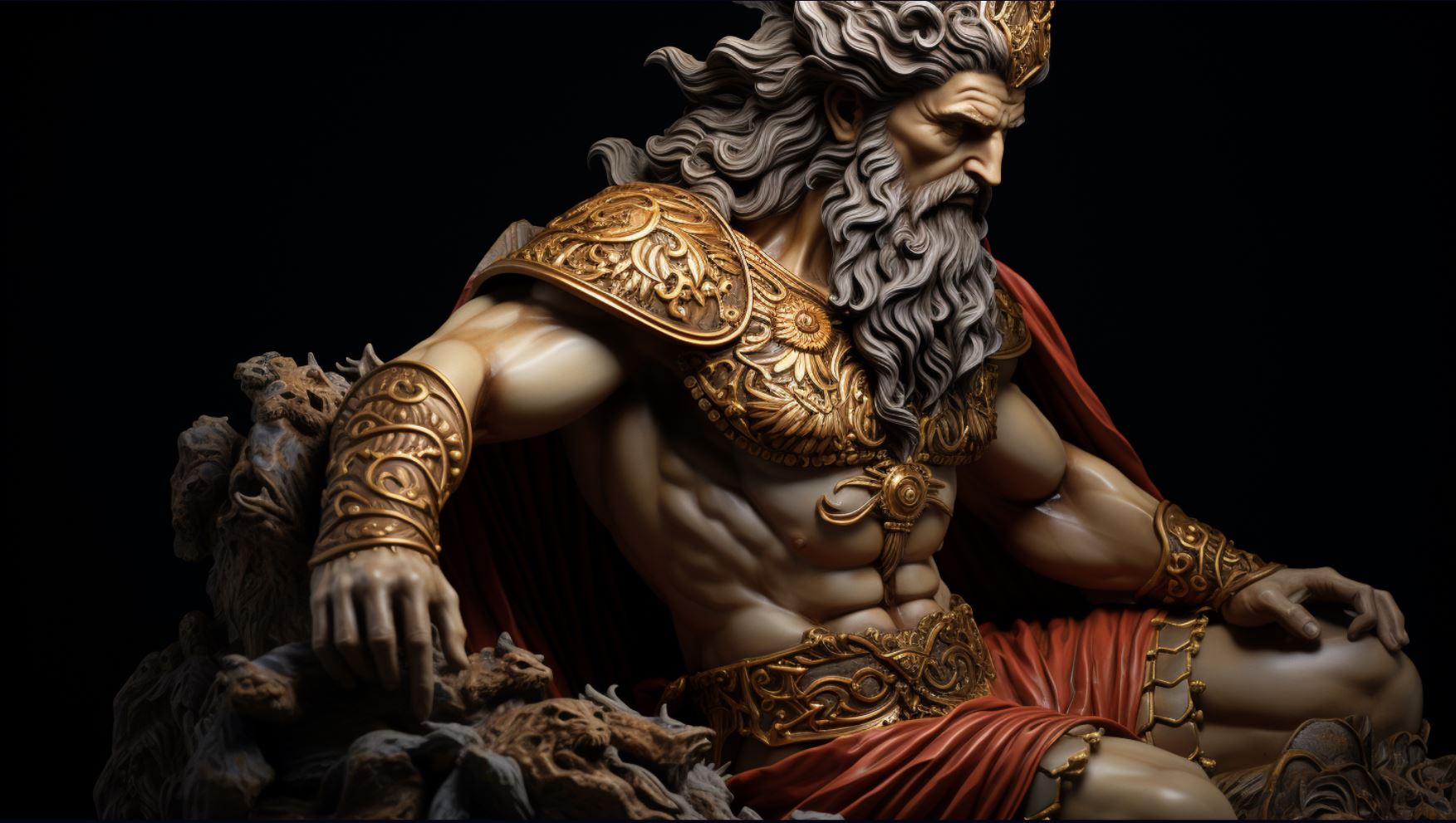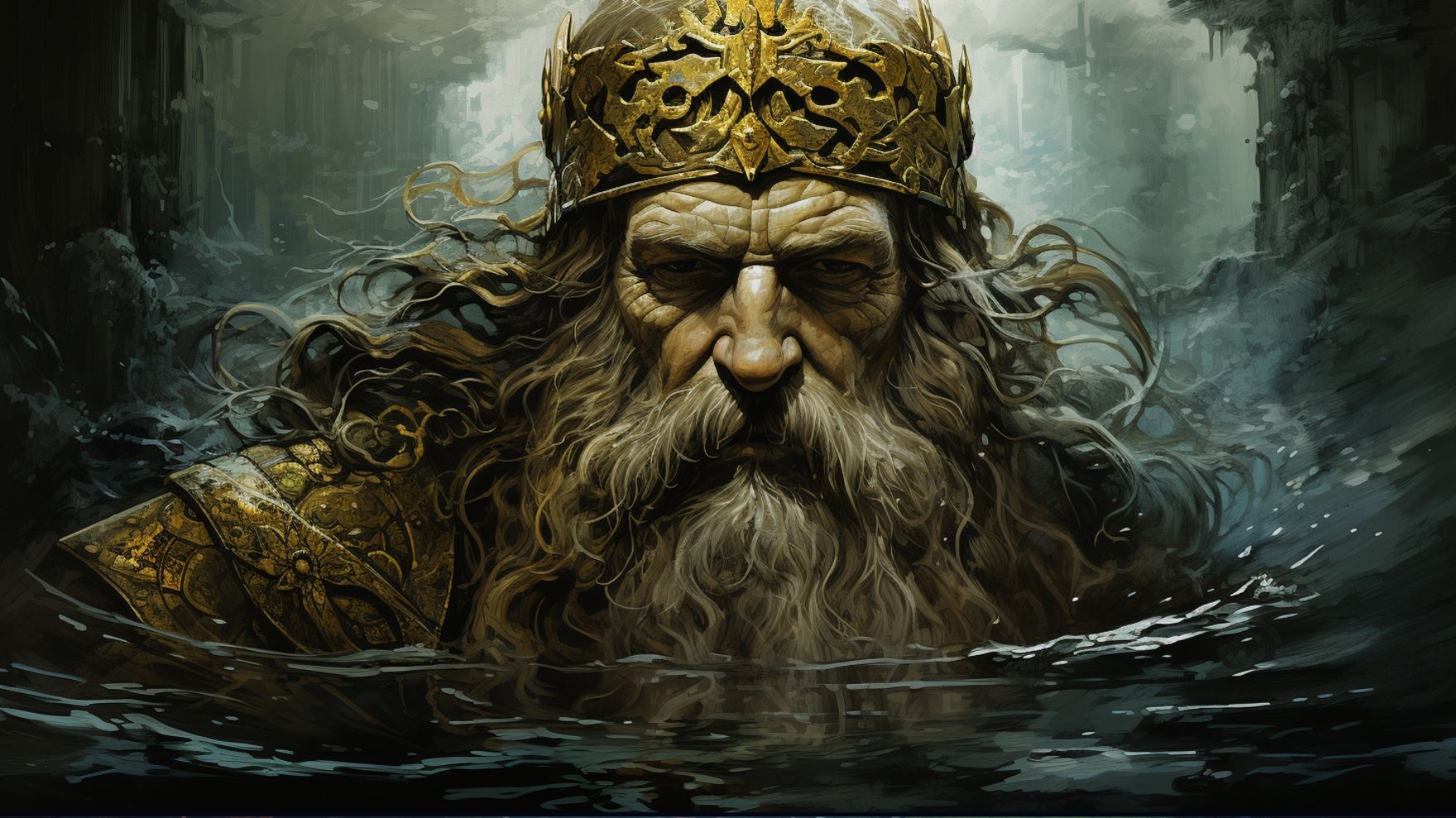Nodens Celtic God: Unveiling the Mysteries of the Ancient British Deity
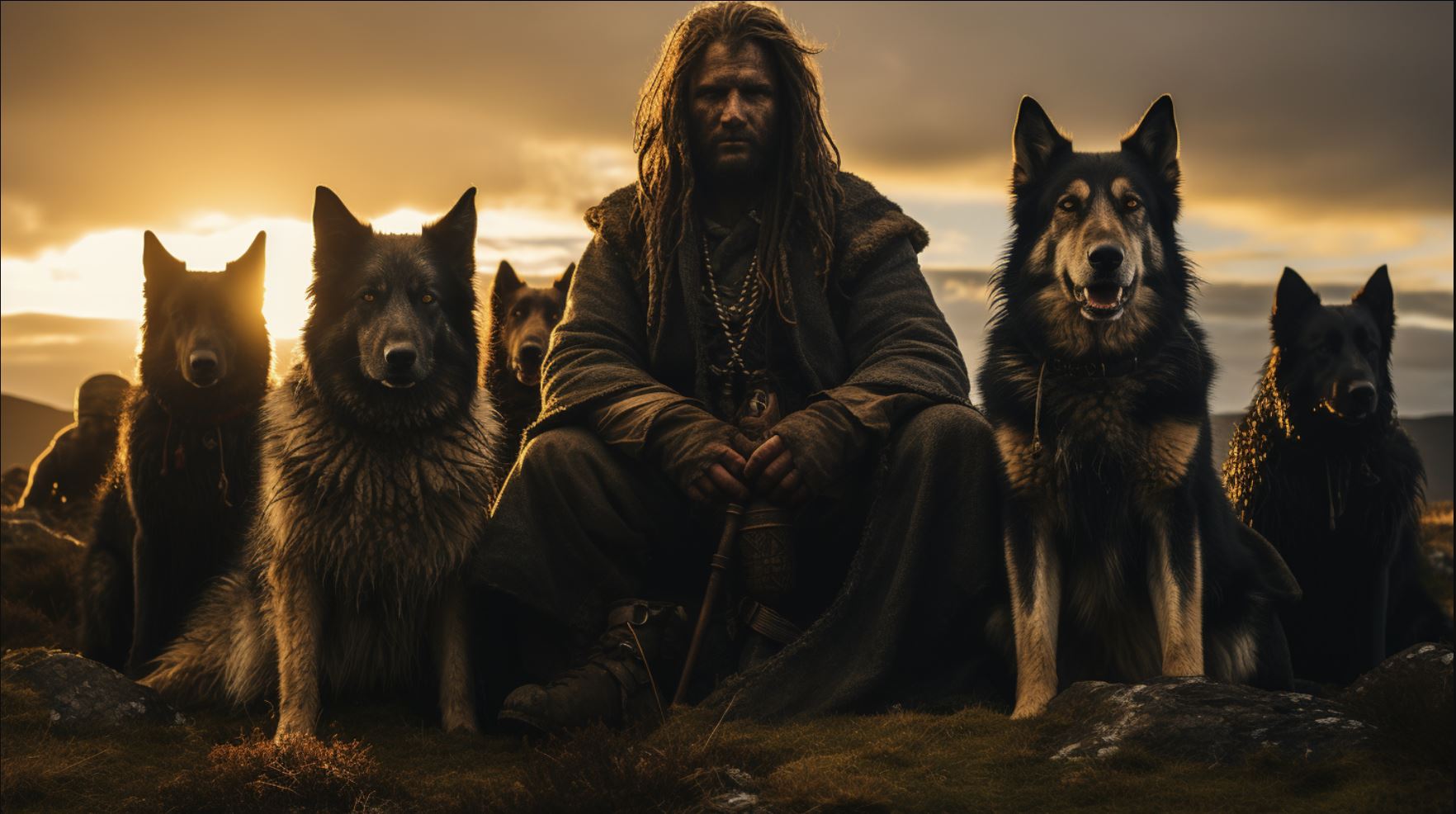
Nodens Celtic God is an ancient deity worshipped in ancient Britain. Associated with healing, the sea, hunting, and wealth, Nodens derives his name from Germanic roots meaning “catch” or “mist,” reflecting his connection to fishing and hunting.
He is also linked to other Celtic and Roman gods like Mars, Mercury, Silvanus, and Neptune. Discoveries at Lydney Park revealed temples dedicated to Nodens, adorned with votive offerings and healing objects.
Nodens’ influence can also be seen in works by J.R.R. Tolkien, Arthur Machen, and H.P. Lovecraft, who portray him as a powerful and enigmatic figure. The deity’s association with dogs is significant in Celtic culture, where dogs were revered as healing animals.
The Ancient Deity Nodens
The Ancient Deity Nodens holds a significant place in Celtic mythology, revered for various aspects of his character and associations. This section will delve into the origins and meaning of Nodens’ name, explore his diverse characteristics and associations, and examine his presence in both Celtic and Roman mythologies.
Origins and Meaning of the Name Nodens
The name Nodens has its roots in ancient Germanic language, where it signifies concepts of catching or fog. This semantic connection speaks to Nodens’ association with activities such as fishing and hunting.
Linguistic analysis provides us with valuable insights into the ancient understanding of this Celtic god.
Associations and Characteristics of Nodens
Nodens is primarily known for his association with healing, the sea, hunting, and wealth. These significant attributes highlight his role as a powerful and versatile deity within Celtic mythology. Nodens embodies the interconnectedness of various aspects of human life, reflecting the ancient belief in his ability to influence and govern these domains.
Nodens in Celtic and Roman Mythology
Nodens’ significance extends beyond Celtic mythology; his presence is also found in Roman mythology, where he is associated with deities such as Mars, Mercury, Silvanus, and Neptune. This cross-cultural connection showcases the adaptation and assimilation of ancient belief systems.
Nodens’ influence transcended boundaries, incorporating diverse mythological elements into his character and worship.
In conclusion, The Ancient Deity Nodens encompasses a rich tapestry of myths and beliefs. Exploring the origins and meaning of his name, his diverse associations and characteristics, as well as his presence in Celtic and Roman mythologies, provides a comprehensive understanding of this intriguing figure in ancient British culture.
Discoveries at Lydney Park
Lydney Park has been a fascinating site for archaeologists, unveiling numerous discoveries related to the worship of the Celtic god Nodens. This sacred location has provided valuable insights into the ancient religious practices and beliefs surrounding this deity.
The archaeological findings at Lydney Park shed light on the temples dedicated to Nodens, the votive offerings and healing objects associated with his worship, as well as the significance of bronze artifacts and statues within these sacred spaces.
Temples Dedicated to Nodens
The presence of multiple temples dedicated to Nodens at Lydney Park showcases the significance of this deity in the religious and cultural landscape of ancient Britain. These temples served as places of worship and reverence for followers of Nodens, and their architecture and layout provide valuable insights into the rituals and practices associated with his cult.
The temples were divided into distinct chambers, possibly dedicated to different aspects of Nodens’ divine triad.
Votive Offerings and Healing Objects
The discovery of votive offerings and healing objects at Lydney Park attests to the central role played by Nodens in matters of health and well-being. The plenitude of bronze artifacts, including statues, pins, and bracelets, suggests a strong belief in Nodens’ ability to cure ailments and bring about physical and spiritual healing.
These objects were precious gifts dedicated to the deity, reflecting the desperate pursuit of healing and the gratitude of those who experienced his interventions.
Significance of Bronze Artifacts and Statues
The prevalence of bronze artifacts and statues within the temples dedicated to Nodens underscores their symbolic significance.
The statues, particularly those depicting dogs, hint at the deep connection between Nodens and these animals, which were revered as healers in Celtic culture. The bronze artifacts, with their intricate craftsmanship, further emphasize the importance placed on material representations of the deity.
The sheer number of bronze objects discovered at Lydney Park attests to the popularity and veneration of Nodens among the ancient worshippers.
Nodens in Literature and Pop Culture
Nodens, the ancient Celtic god, has made a significant impact on literature and popular culture. This section explores his presence and influence in various works, showcasing his enduring legacy.
Nodens in the Works of J.R.R.
Tolkien
The legendary writer J.R.R. Tolkien drew inspiration from various mythologies in crafting his intricate fictional world. Nodens’s influence can be seen in the character Celebrimbor, the renowned creator of the Rings of Power.
Like Nodens, Celebrimbor possesses a deep understanding of craftsmanship, magic, and the enduring power of artifacts.
Representation of Nodens in Arthur Machen’s Writings
Renowned British author Arthur Machen also incorporated Nodens into his works, exploring his enigmatic nature and connection to ancient British mythology. Machen’s portrayal often highlights Nodens as a mysterious and powerful figure, shrouded in the arcane lore of the past.
His stories weave together elements of Celtic tradition and supernatural horror, capturing the awe-inspiring presence of Nodens.
Lovecraft’s Portrayal of Nodens as the ‘Lord of the Great Abyss’
The iconic horror writer H.P. Lovecraft further popularized Nodens through his evocative storytelling. In Lovecraft’s mythos, Nodens is depicted as a godly being, the ‘Lord of the Great Abyss.’ Lovecraft connects Nodens with night-gaunts, mysterious creatures that dwell in the dark recesses of the cosmos.
Through Lovecraft’s writings, Nodens takes on an even more ominous and captivating persona.
In summary, Nodens’s presence in literature and popular culture showcases his enduring allure and ethereal qualities. Through the works of Tolkien, Machen, and Lovecraft, his mystique is perpetuated, captivating readers and fans alike.
The Connection between Nodens and Dogs
The ancient Celtic culture holds a symbolic significance of dogs, which is reflected in their association with the deity Nodens. Dogs were revered and considered sacred animals in Celtic society, embodying qualities of loyalty, protection, and healing.
The Symbolic Role of Dogs in Celtic Culture
In Celtic mythology, dogs are often depicted as companions and guides, serving as guardians of the spiritual realm. They are believed to possess the ability to perceive and interact with supernatural forces, acting as mediators between humans and the divine.
Dogs also played a crucial role in hunting, a significant activity associated with Nodens. Their keen senses, agility, and loyalty made them valuable companions in the pursuit of game, emphasizing their connection to both the physical and spiritual realms.
Healing and Protective Aspects of Nodens’s Association with Dogs
Nodens, the Celtic god of healing, aligns closely with the inherent curative qualities attributed to dogs. These animals were believed to possess healing powers, influencing the well-being of individuals suffering from ailments or seeking spiritual balance.
Moreover, dogs were considered protective guardians, safeguarding their owners from harm and evil spirits. They represented Nodens’ role as a protective deity, ensuring the safety and well-being of his devotees.
- Dogs were often present in Nodens’ temples and depicted in accompanying statues, symbolizing their close association with the deity and his healing attributes.
- In Celtic rituals and ceremonies, dogs were believed to have the ability to cleanse negative energies and promote physical and spiritual healing.
- The presence of dogs in depictions of Nodens also reinforces his role as a guide, leading individuals on their spiritual journeys towards enlightenment and wholeness.
In conclusion, the connection between Nodens and dogs in Celtic culture represents the interplay between healing, protection, and spirituality.
Dogs embody the qualities attributed to Nodens himself, serving as symbols of loyalty, guardianship, and the transformative power of healing.
.

